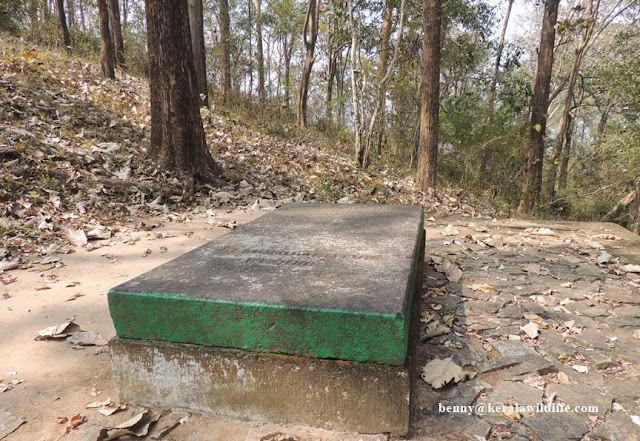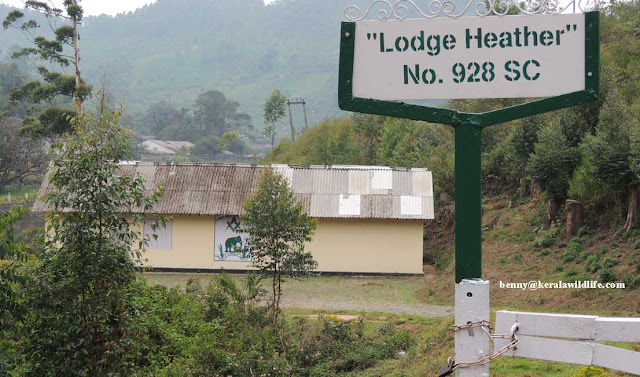WOOD WHO BURIED IN WOODS
WOOD WHO BURIED IN WOODS
Anamalai Tiger Reserve is the
largest protected forest in South India with varied type of forests. From
tropical wet evergreen to dry thorny scrub forest, the tract passes through
moist deciduous, semi-evergreen, high shola grassland, tropical dry deciduous
to thorny scrub forest in leeward. It harbours hundreds of species of plants,
animals, reptiles, amphibians, birds and mammals with high endemism. Topslip ,
near Pollachi, bordering Parambikulam Tiger Reserve of Kerala is the head
quarters of the Anamalai Tiger Reserves . It consists of National Parks,
sanctuaries and Tiger Reserve. Topslip is the only open area for tourism in
Anamalai. My first visit of Topslip was in 1997. From 1997 onwards I became a
frequent visitor of these forests as a naturalist guide, leading groups of
wildlife enthusiasts.
I walked along the wet evergreen forests of Kariayanchola National Park, Pandaravara grassland, Maruthamkudam moist deciduous forest, Varagaliyar, Kozhikamuthy, Ambily hills etc till 2007, when tourism and core zone are marked separated. In all these tracts I have spotted many interesting species of flora and fauna, including Tiger, leopard, king cobra, Anamalai salia etc. I was surprised about the amount species of wildlife of the area.
As a person working on ethnology and archaeology I worked closer with Kadars and Mala Malasars of these forests in these years. The Kadars and Mala Malasars are now restricted to Anamalais including Parambikulam and Sholayar. The works of Edgar Thurston who fascinated with customs and lifestyles of Kadars strongly believed that the Dykes of Indo-Malayan had strong connection with Kadars. I worked silently among Kadars of Erumapara and Parmabikulam and observed many of their culture and life.
I walked along the wet evergreen forests of Kariayanchola National Park, Pandaravara grassland, Maruthamkudam moist deciduous forest, Varagaliyar, Kozhikamuthy, Ambily hills etc till 2007, when tourism and core zone are marked separated. In all these tracts I have spotted many interesting species of flora and fauna, including Tiger, leopard, king cobra, Anamalai salia etc. I was surprised about the amount species of wildlife of the area.
As a person working on ethnology and archaeology I worked closer with Kadars and Mala Malasars of these forests in these years. The Kadars and Mala Malasars are now restricted to Anamalais including Parambikulam and Sholayar. The works of Edgar Thurston who fascinated with customs and lifestyles of Kadars strongly believed that the Dykes of Indo-Malayan had strong connection with Kadars. I worked silently among Kadars of Erumapara and Parmabikulam and observed many of their culture and life.
The
Mount Stuart Bungalow, locally known as ‘Kannadi Bungala’ is located in a small
hill in the border line between Kerala and Tamil Nadu. It is surrounded by tea
plantations interspersed with bamboo groves and deciduous species of shrubs,
creepers etc. Till 2007 it was given to tourists for overnight camping. Migration
tracts of Elephants through the bamboo reeds from Parambikulam to
Maruthamkoodam in Urulandi range are visible from the Bungalow. One can easily
notice active tracts of Sloth Bear in its veranda and backyard.. We can hear
the roaring Thoovanam waterfalls from the cottage.
 |
| Mount Stuart Cottage |
A stream with bamboo grove
passing through a narrow gorge in the north slope of Mount Stuart is an ideal
place for watching wildlife movement and birds. We had good sightings of
Elephants and sloth bear from this area. Some of the ficus trees in the slope are
ideal spots for watching hornbill. Once we went down to the stream along the
slope. I stopped there ignoring the warnings of elephant heard in the
downstream. There in the slope I noticed a grave covered in mosses and leaf
litters. Arumugam, my guide from the local tribal community, said it is the
burial of an English man who lived in ‘kannadi Bungala’. We removed the dry
leaf and helms. There we saw an engraving in ‘HUGO WOOD Indian Forest Service
Born – June 12 1870 Died ; Dec. 12 1933’
The Mount Stuart cottage is built in 1887, in the name of the then British collector of Coimbatore. Why the British went into hill stations of Western Ghats is clearly known. Ootty, Valparai, Munnar and many such places were converted into small British colonies to save themselves from the heat of law land. There they started found commercial activities like plantations and timber extractions. It is for the timber extraction that the British came to Topslip, a small hillock at 700MSL. It is not far from Coimbatore. In the first half of 19th century, the British surveyed the Indian subcontinent trigonometrically. The surveyors submitted their finding of resources they found in different parts of the country. In Anamalai forests they found huge amount of big teak trees ready for extraction. It was Ward & Conor who surveyed Anamalais in 1820 as part of their survey in Madras Presidency.
The Mount Stuart cottage is built in 1887, in the name of the then British collector of Coimbatore. Why the British went into hill stations of Western Ghats is clearly known. Ootty, Valparai, Munnar and many such places were converted into small British colonies to save themselves from the heat of law land. There they started found commercial activities like plantations and timber extractions. It is for the timber extraction that the British came to Topslip, a small hillock at 700MSL. It is not far from Coimbatore. In the first half of 19th century, the British surveyed the Indian subcontinent trigonometrically. The surveyors submitted their finding of resources they found in different parts of the country. In Anamalai forests they found huge amount of big teak trees ready for extraction. It was Ward & Conor who surveyed Anamalais in 1820 as part of their survey in Madras Presidency.
During that period in world history,
teak tree was one of the most demanding material for shipbuilding, rail etc
through out Europe, Asia , Africa and America. Colonial powers in Asia had the
advantage of extraction of teak from Tropical Asia. Soon after the survey by
Ward and Conor, the British Government ordered for clear felling of the forest
for teak extraction. From Ambily hills and other focal points teak logs were
‘slipped down’ to Anamalai River, which is the head river of Nila. Through the
river, logs were floated to Arabian Sea for export. Soon for the management of
Anamalai forest the British government appointed a forest officer called Hugo
Wood. He was well known among British administration for his excellence in
forest service. More than a forest officer, Wood was a conservationist who
dedicated himself for nature. He was disappointed with the clear felling
advised by local landlords (Palayakarar). Wood prepares a master plan for
sustainable forest management. He introduced ‘Coppice Method’ of felling.
Through this method roots of the harvested tree kept in soil to regenerate. It
is useful for regenerating species like teak that can grow from its root
section. He also advised the contractors to plant saplings in cleared area. He
started living in ‘Mount Stuart’. He, along with his tribal servants walked
along the cleared tracts and sow seeds of teak and other species. He stopped
the clearing of Kariyanchola and requested to keep the un-cleared patch of evergreen
forest in Urulandi range. Apart from protecting and regenerating trees, Wood
controlled hunting.
He spent his life in these woods till his death in 1933. He was 63 years then. He started his life in Anamalais in 1915. Till his death in 12th December, Wood walked with seeds and sapling. Along with his Kadar servants Wood planted hundreds of trees. As he wished, his body was buried among the woods he nursed and loved. My last visit to his grave was in 2016 February 14. I led a team escorted by famous naturalist Frances Fadden from Kudu travels UK. Then I asked her about a sentence written in three lines on the grave in Latin ‘ Si monumentum Requiris Circumspicel’ Francis in her poetic words explained ‘look around , these tall trees are his memorial - its word to word meaning is ‘If you are looking for a memorial , look around’. Those words explain everything about Wood. Yes, you can see him in these trees, shrubs, flowers, birds and animals. It was his efforts that regenerate this healthy ecosystem. Above all there is no sign of any religion on his grave.
He spent his life in these woods till his death in 1933. He was 63 years then. He started his life in Anamalais in 1915. Till his death in 12th December, Wood walked with seeds and sapling. Along with his Kadar servants Wood planted hundreds of trees. As he wished, his body was buried among the woods he nursed and loved. My last visit to his grave was in 2016 February 14. I led a team escorted by famous naturalist Frances Fadden from Kudu travels UK. Then I asked her about a sentence written in three lines on the grave in Latin ‘ Si monumentum Requiris Circumspicel’ Francis in her poetic words explained ‘look around , these tall trees are his memorial - its word to word meaning is ‘If you are looking for a memorial , look around’. Those words explain everything about Wood. Yes, you can see him in these trees, shrubs, flowers, birds and animals. It was his efforts that regenerate this healthy ecosystem. Above all there is no sign of any religion on his grave.








ReplyDeletesell your k i d n e y for money, we are looking for k i d n e y d0n0rs with the sum of $500,000.00 USD,apply now via email: (sk500968@gmail.com)
WhatsApp +91 7795833215
Richard R. Cole Is expert of Outside tools and gadgets to assist you in Choosing appropriate product among tens of thousands of Choices Chainsaw Sharpener Review
ReplyDelete